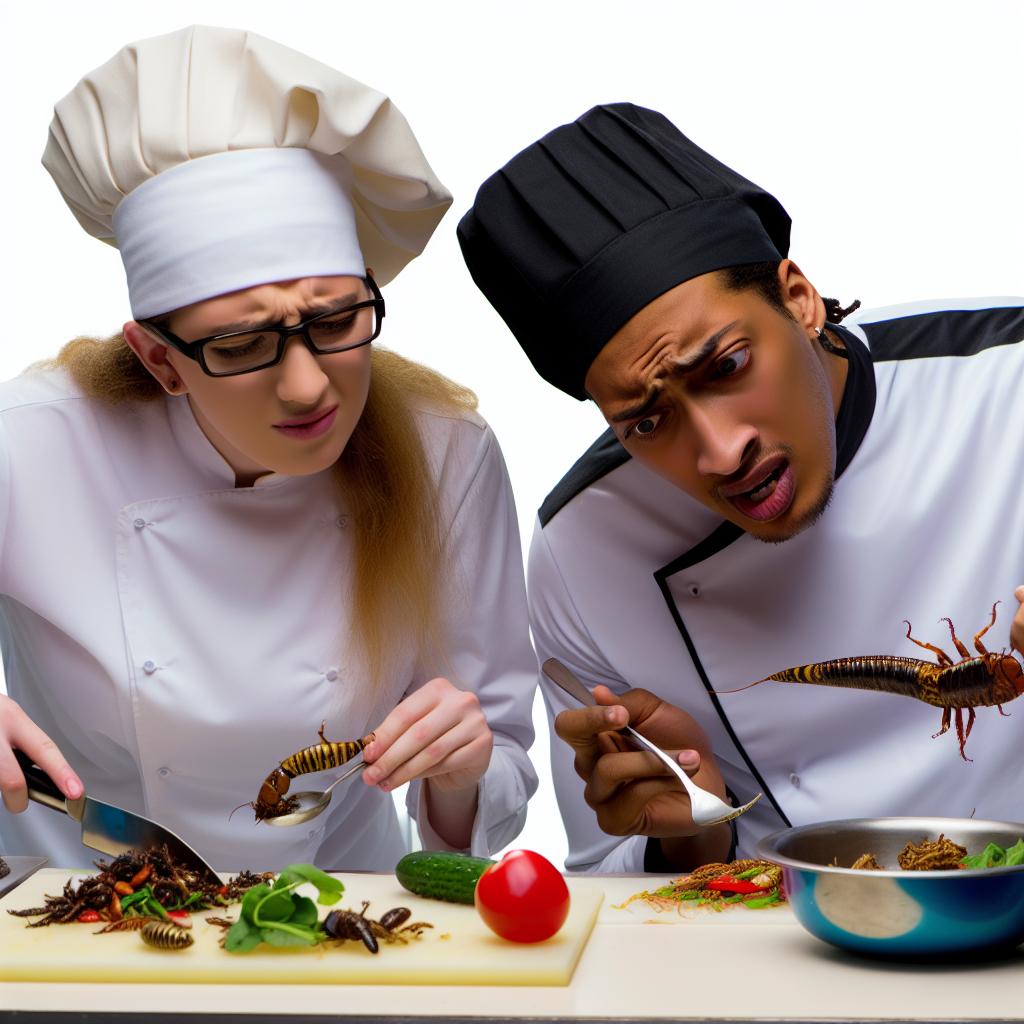The Cultural Hurdle
One of the main challenges in introducing insects to Western diets is the cultural perception of insects as food. In many Western countries, insects are often associated with pests rather than a food source. This perception is embedded in culture and tradition, creating a significant psychological barrier to acceptance. While in some parts of the world, such as Southeast Asia and Africa, eating insects is common and culturally acceptable, Western societies tend to view this practice with a degree of skepticism or fear.
Traditional Western culinary norms do not typically include insects as part of the diet. To many, the thought of consuming insects incites a reaction of disgust, known colloquially as the “yuck” factor. This reluctance is further compounded by a lack of familiarity and exposure to various culinary practices that include insects. In contrast, cultures that regularly consume insects have long-standing traditions that normalize them as part of their diets. This difference illustrates the power of cultural conditioning in shaping dietary preferences.
Education and Awareness
To shift this cultural perception, education and awareness campaigns are essential. These campaigns need to focus on the benefits of consuming insects, such as their nutritional value and environmental sustainability. Insects are a rich source of protein, vitamins, and minerals. Furthermore, they require fewer resources to farm compared to traditional livestock, making them a more sustainable option.
These campaigns must be multifaceted and methodical, aiming to inform and alter long-standing perceptions. For instance, school curricula could incorporate modules about the nutritional benefits of insects, linking them to broader topics like food security and environmental issues. Documentaries and public talks by nutritional experts can disseminate information directly to the public. Engaging media campaigns can also highlight success stories from other cultures that have thrived on insect-based diets.
Moreover, collaborating with chefs and food influencers could aid in reshaping the public’s perception. By showcasing insect-based dishes prepared in appetizing ways, chefs can demonstrate innovative culinary uses for insects, making them more appealing to a broader audience. Influencers can leverage their platforms to reach a younger demographic, thus playing a pivotal role in normalizing insect consumption.
Regulatory and Safety Concerns
Another challenge lies in the regulatory frameworks governing food safety. Insects as food are relatively new in Western markets, leading to a lack of well-established regulations. Food safety concerns can deter potential consumers. Regulatory bodies need to establish clear standards to ensure that insect-based foods are safe for consumption. This involves setting guidelines for farming, processing, and distribution.
Overcoming regulatory hurdles will require collaboration among key stakeholders, including government agencies, researchers, and industry players. Developing comprehensive guidelines that address potential health risks and ensure quality is paramount. This includes testing for allergens, contaminants, and nutritional content to build consumer trust. Clear labeling standards must be established so consumers understand what they are purchasing.
Additionally, international collaborations can help create harmonized standards, facilitating trade and fostering a global market for insects as food. By studying successful regulatory frameworks from countries where insect consumption is established, Western markets can develop robust systems that meet both safety and ethical standards.
Market Development
The development of a viable market for insect-based products is still in its nascent stages in the West. There are logistical challenges related to scaling up insect farming, processing, and distribution to meet potential demand. Investments in technology and infrastructure are needed to develop efficient supply chains that can provide insects at competitive prices.
Entrepreneurs and startups play a critical role in market development by innovating new products and finding cost-effective methods for production. Research and development can lead to technological advances in farming techniques, such as automated systems that improve efficiency and reduce costs. Financial incentives or subsidies from governments could stimulate investment in this burgeoning sector.
Furthermore, fostering partnerships between insect farms, food manufacturers, and retailers can strengthen distribution networks and facilitate market entry. Collaborations with academic institutions could also promote research into breeding practices and processing technologies, ultimately boosting productivity.
Overcoming the “Yuck” Factor
Finally, overcoming the visceral “yuck” factor is crucial. This is the immediate negative reaction many people have to the idea of eating insects. Marketing strategies, including appealing product presentations and the incorporation of insect protein into familiar foods, can help mitigate this reaction. By integrating insect-based ingredients into processed foods like protein bars and snacks, companies can gradually introduce consumers to insect consumption without confronting them with the whole insect form.
To address this, it is essential for food companies to invest in branding that highlights the positives of insects, shifting the focus from fear to curiosity and health benefits. Attractive packaging, compelling storytelling, and relatable branding can significantly alter consumer perceptions.
Consumer trials and tasting events could provide firsthand experience, breaking down barriers and building acceptance over time. Culinary festivals and food expos that focus on sustainable eating practices can showcase insect-based products alongside traditional foods.
By carefully navigating these concerns and challenges, it might be possible to gradually integrate insects into Western diets, transforming cultural perspectives over time and ultimately achieving greater sustainability in food consumption.
Learn more about the future of sustainable food options here.

